Graphics Programs Reference
In-Depth Information
Note
As a cool aside: The World Coordinates
check box makes it so that the texture (or
image map or procedural)
doesn't follow the
object when the object moves
. With this box
checked, the texture stays rooted to the
“world.” What's neat is that when you move
an object with World Coordinates checked,
the object appears to move
through
the tex-
ture! (Keep this in mind for when you find
yourself doing special effects.)
Figure 4-67: Using found textures and blending
them with another surface, we quickly got
something that looks like a slice right off of
someone's model of a castle.
Note
You can find out more about the different
kinds of mapping types that LightWave offers
— spherical, cubic, front, and planar — in
the LightWave manual. The other type of
mapping LightWave offers,
UV mapping
,is
best explained through example, which we
get into in the next chapter.
Note
The finished scene for this step is: Scenes\
Chapter_04\StillLife_07_Surfacing1_F.lws.
...
Not bad for just being “foundation mate-
rial,” eh? Remember,
we're only scratching
the surface!
There's more to LightWave
than I think anyone realizes. Every day, I
look through periodicals or web sites that
focus on LightWave and am constantly
amazed at what people are doing. There are
no limits for the passionate, creative soul,
for the imaginative, explorative mind.
Now, go play! I'll see you in the next
chapter. But until then, start using what
you've learned and start having some fun!







